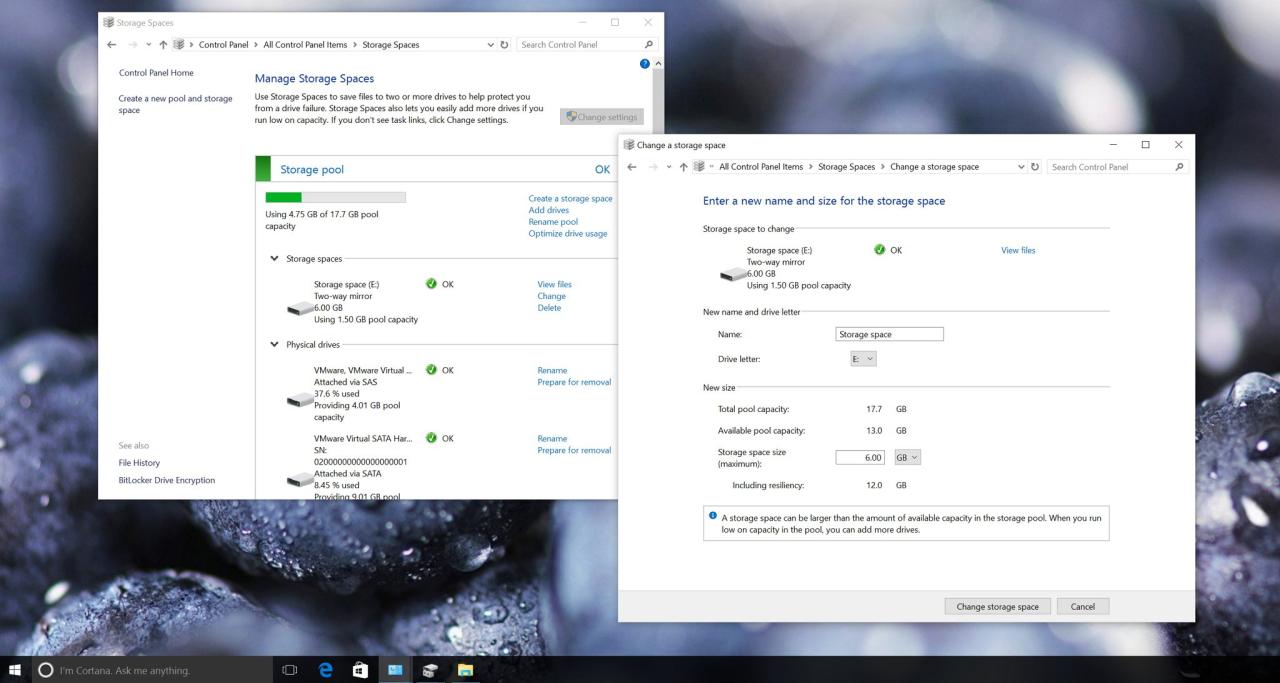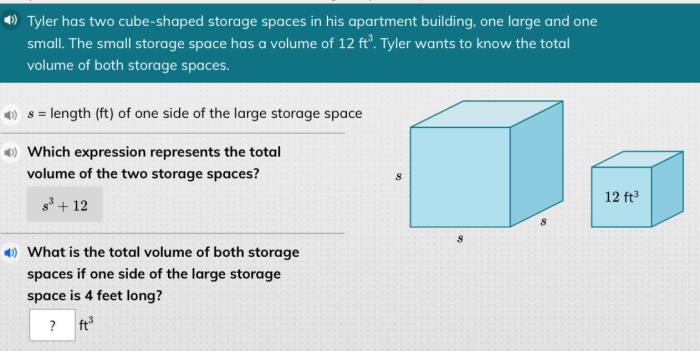What is the total volume of both storage spaces? This question is of paramount importance when planning and managing storage systems. Understanding the total storage capacity available is crucial for optimizing space utilization, ensuring data accessibility, and preventing storage bottlenecks.
Calculating the total storage volume involves understanding the formula for calculating the volume of individual storage spaces and applying it to the specific dimensions of the spaces in question. By following best practices for storage space optimization, organizations can maximize their storage capacity and reduce the risk of running out of space.
Total Storage Volume Calculation: What Is The Total Volume Of Both Storage Spaces

The total storage volume of two storage spaces can be calculated using the following formula:
Total Volume = (Length x Width x Height)Space 1+ (Length x Width x Height) Space 2
For example, if Storage Space 1 has dimensions of 10 feet long, 5 feet wide, and 8 feet high, and Storage Space 2 has dimensions of 12 feet long, 6 feet wide, and 10 feet high, then the total storage volume would be:
Total Volume = (10 x 5 x 8) + (12 x 6 x 10) = 400 + 720 = 1120 cubic feet
Storage Space Optimization

There are several strategies that can be used to optimize storage space utilization, including:
- Vertical storage:Using shelves, racks, and drawers to store items vertically can significantly increase storage capacity.
- Multi-purpose furniture:Choosing furniture that serves multiple purposes, such as a bed with built-in storage drawers, can save space.
- Decluttering:Regularly removing unnecessary items from storage spaces can free up a substantial amount of space.
- Space-saving techniques:Using vacuum storage bags, hanging organizers, and other space-saving techniques can help to maximize storage capacity.
The benefits of using space-saving techniques include:
- Increased storage capacity
- Reduced clutter
- Improved organization
- Easier access to items
Storage Capacity Planning

When planning for future storage capacity needs, it is important to consider the following factors:
- Current storage usage:Analyze current storage usage patterns to identify areas where additional capacity may be needed.
- Projected growth:Estimate future storage needs based on projected business growth and expansion plans.
- Storage density:Consider the storage density of different storage systems to determine the most efficient use of space.
- Redundancy:Plan for redundancy in storage systems to ensure that data is protected in the event of a failure.
To estimate storage requirements based on usage patterns, consider the following:
- Average file size:Determine the average size of files that will be stored.
- Number of files:Estimate the number of files that will be stored.
- Growth rate:Estimate the rate at which storage requirements are expected to grow.
FAQ Corner
How do I calculate the total storage volume of two storage spaces?
To calculate the total storage volume, multiply the length, width, and height of each storage space and then add the results together.
What are some strategies for optimizing storage space utilization?
Strategies for optimizing storage space utilization include using space-saving techniques such as compression, deduplication, and thin provisioning, as well as implementing data organization and management policies.
